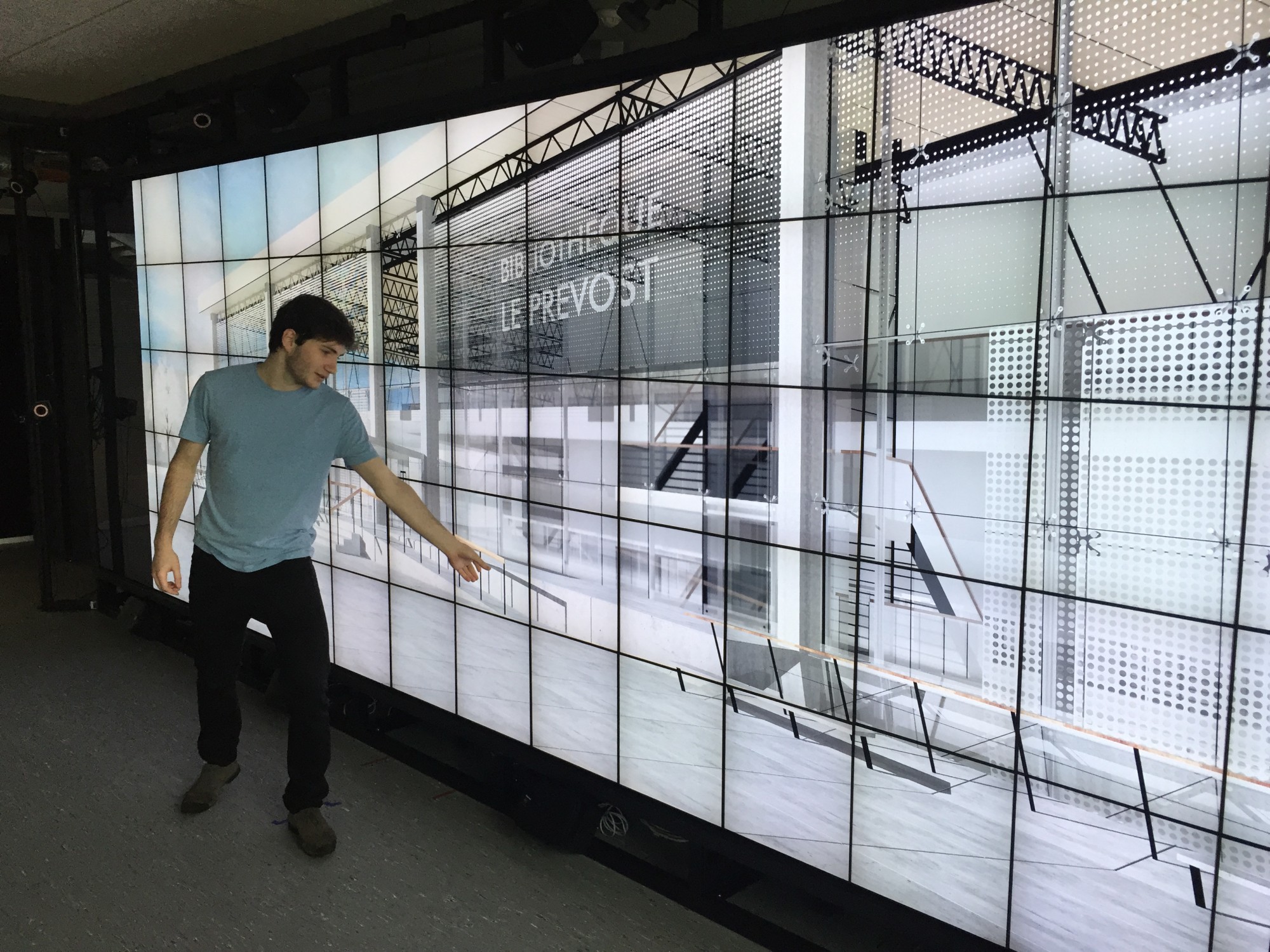
The conceptual model of WildOS is a platform, such as the WILD or WILDER room, that can be described as a set of devices on which one or more applications can be run.
WildOS consists of a server running on a machine that has network access to all the machines involved in the platform, and a set of clients running on the various interaction resources, such as a display cluster or a tablet. Once WildOS is running, applications can be started and stopped and devices can be added to or removed from the platform.
WildOS relies on Web technologies, most notably Javascript and node.js, as well as node-webkit and HTML5. This makes it inherently portable (it is currently tested on Mac OS X and Linux). While applications can be developed only with these Web technologies, it is also possible to bridge to existing applications developed in other environments if they provide sufficient access for remote control. Sample applications include a web browser, an image viewer, a window manager, and the BrainTwister application developed in collaboration with neuroanatomists at NeuroSpin.
WildOS is used for several research projects at ExSitu and by other partners of the Digiscope project. It was also deployed on several of Google’s interactive rooms in Mountain View, Dublin and Paris.